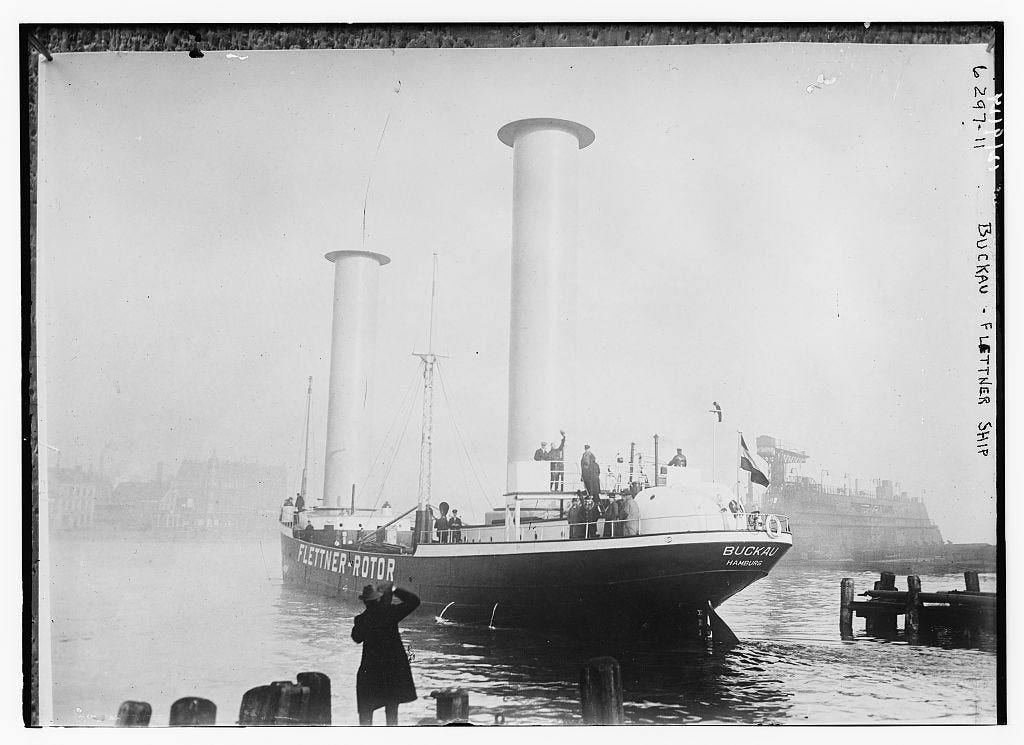Will we see ‘Green’ ships in our lifetime?
The shipping industry is responsible for 2-3% of all global carbon emissions. We depend on it for almost all of our products, so will an alternative arise?
Cargo ships carry about 80% of the world’s trade. This is accomplished by 90,000 vessels floating about in the sea. We live in a consumer-based society and the most effective way to get any product is through shipping. Air cargo contributes more to global pollution, but let’s tackle one thing at a time.
Just to hit you with some stats. These ships use about 370 million tonnes of fuel every year. They give out 2 to 3% of all Carbon dioxide emissions, but they contribute 9% of all Sulphur oxides, and between 18 to 30% of all Nitrous oxide emissions in the world. 70% of all these emissions is within 400 km of land. That means this goes straight into your lungs.
But the interest for upgrades is not really about health, it’s about climate change. And that is what’s driving the transition in cargo shipping. The world is shifting to electric, and the shipping industry is not far behind. After the Paris Agreement, the International Maritime Organisation had agreed that by 2030 they will cut emissions by 40%. This is heartening but is it enough?
Let’s understand the problem with fuel.
The fuel used by most cargo ships is Heavy Fuel Oil (HFO). This is highly viscous and requires heating to be effective. It’s the bottom feeder crude oil which is highly polluting and causes various respiratory diseases. If you’ve been near a ship, you can literally smell it. But it’s cheap and keeps the profits high.
Certain areas, which have stricter emissions control, require the ships entering said areas to use Marine Gas Oil or Marine Diesel oil, which has lower emissions and is relatively cleaner. Most ships still use HFO which has high sulphur levels and has been in use since the 1930’s. Some ships have installed suppressions system and soot filters to reduce the harm caused. But there is a larger hope that HFO will be phased out soon.
The trick to reduce emissions, that shipping companies had realised, was to reduce the speed of the ships. A slower pace reduces the drag and thus reduces the fuel consumption and thus reduces the emissions. It is one of the solutions but not the best.
Alternate fuel solutions
Biofuel is any fuel made from plant material, animal material or both. It has the potential to completely eliminate emissions and can also be used as an additive to stabilise existing fuels. The drawbacks with Biodiesel are that the cost is economically impractical and it’s not stable for extended periods of idle standing. There is also a potential for deforestation to feed this fuel type.
LNG is natural gas that has been liquified at lower temperatures to make it easier to store and transport. LNG as fuel for ships can cause a reduction of 80% in nitrous oxides and almost eliminates sulphur oxides. But natural gas is still a fossil fuel and the process of creating LNG is energy intensive.
Hyrdogen literally has no carbon to emit. It’s just hydrogen, which you can get from splitting water. And with hydrogen fuel cells, even the waste is water. Seems like a win-win situation and is being considered as a serious alternative. But it is still far from being practical for long journeys and has inherent risks.
LNG and Hydrogen require more storage space on ships but are the most viable alternatives to traditional fuel, as the existing ships require less retrofitting. There is also development in Methanol fuels, Ammonia, Low Sulphur fuels, Distillate fuels, and Emulsified fuels. Overall, we’re seeing multiple alternatives being explored to reduce shipping emissions.
But this is still talking about fuels. We need to explore alternative technologies to move forward.
Are wind sails making a comeback?
Surprisingly yes. Something which allowed ships to cross the seas for centuries, is making a return to reduce emissions. Shipping companies are trying different methods to use wind to move their ships, although it’s from a perspective of reducing fuel cost. This has practical application in the Pacific and North Atlantic routes, which have sufficient wind speeds.
We have used cloth sails to let the winds push our boats. We’re using a version of the same to propel larger ships over larger distances. Flettner Rotor sails, a century old technology, are spinning pillars that pop out of the ships to use something called the Magnus effect to thrust the ship forward. This can lead to a reduction of 8 - 10% in fuel consumption, thus removing about a 1000 tonnes of carbon dioxide from the air.
Another wonderful system is a Kite. A massive kite is attached to ships via a winch, to help with the fuel load. These kites fly at a height of 100 to 300 meters where the winds are more consistent and stronger, which can lead to a 5 - 12 % reduction in energy consumption.
If a combination of Biofuels and Rotor sails were implemented, we could have a zero-emission ship today. But the commercials aspects don’t warrant much investment. Theses wind systems generally eat up space, lack any substantial savings, and hold a risk of damage. They can even potentially tip the ship over.
If we can have Electric cars, why not Electric ships?
There is a possibility of having vertical wind mills on the ships, not just to push the ship forward, but to generate electricity and store them in batteries. And that is where we really want to go – Electric ships.
Technically all ships are ‘electric’. They use an electric motor to turn the propellers which push the ship forward in the water. The only non-electric part is that we need to burn diesel to generate that electricity. So, what we really need is to replace the diesel with batteries. Simple yet not so.
The power that you get from fuel hypothetically can be replaced by a battery, which is charged on land from renewable sources. The issue is that no battery exists to move a 200,000 tonne ship. It’s all about capacity and weight. The fuel + engine weighs about 5000 + 2000 tonnes. Today’s batteries are extremely inefficient, and to produce the same energy as that much fuel, we need about 100,000 tonnes worth of batteries. It would be stupidly expensive, would take days to charge, and would mean removing more than half the cargo on any ship. And no shipping company is ever going do that.
But there is a silver lining in terms of solid-state batteries. I’ll discuss this in detail in another article, but solid-state batteries have the potential to take up less space, less weight and have a higher energy density aka capacity. There is considerable research going into developing this for the shipping industry and could drive us towards electric ships.
Do we have electric ships in use right now?
At the moment we already have ships which are a 100% electric and are being tested all over the wold. In Denmark and Norway, all electric ferries are being used for short distances. They charge via hydroelectric power, every time they dock for passengers to board and disembark.
Hybrid systems of fuel and batteries are also in use. The batteries are used when the ship needs peak power and performance, and they also store any excess power generated by the diesel engines. This is what the shipping industry sees as the most practical way forward.
But if Greta Thunberg can do it, why can’t shipping companies?
Greta famously travelled to New York from her home in a sailing boat which had zero emissions. It had wind sails for propulsion. Solar panels and underwater turbines were used for communication, lighting and all electricals. It made headlines the world over, especially as she was on her way to talk about climate change.
It took her about two weeks to make that trip, but her flight would have pumped out about a 1000 kg of carbon dioxide. So it seems to have been a worthy way to make a point. But for shipping companies it’s more about the answers they need to give to their shareholders, especially with rising costs and companies going out of business.
To give credit to the shipping industry, there exists the Getting to Zero Coalition. It is an alliance of 140 companies and organisations that have banded together to ensure that the first zero-emission ship is in the water by 2030. It is a slow and meek response, but a vital moment when you look at the players involved. Just to understand, 1 conventional ship gives out carbon dioxide worth 70,000 cars, nitrous oxide given out by 2.5 million cars and carcinogenic dust equivalent to 2.5 million cars. Replacing even one with a zero-emission ship would do wonders.
So what now?
The sad truth is that the technology already exists to completely decarbonise the shipping industry by 2035. But that would require massive investment and the phasing out of multiple existing ships. This doesn’t seem to make adequate financial sense for most companies in the short term.
Companies and even navies are exploring electric and carbon neutral ships, but these will take a long time to come into circulation. Cargo ships have a lifespan of 30 years. So until the cycle completes, shipping firms have no motive to change their current plans.
One change that we’re witnessing is that the consumers are demanding their products be sustainable. And the supply chain is an integral cog in this demand. Environmental, Social and Governance, or ESG impacts, are becoming part of every company’s disclosure. This is leading to higher accountability and is already causing ripples in the shipping industry.
The future will see autonomous electric ships, but also see western nations apply tighter emission standards for ships entering their maritime borders. Unfortunately, poorer nations who are extremely cost sensitive, will be unable to apply these to avoid becoming uncompetitive. This will lead to older and more polluting ships to congregate in the third world, leading to a spike in health hazards for everyone already suffering from poverty.
Not to leave on a grim outlook, there is hope and movement for greener vessels. Shipping companies are realising the long-term benefits and are making a play. There will be a time, when all the ships in the world have zero emissions and don’t contribute to climate change anymore. In the meanwhile, we can select products which have a higher ESG rating. That’s the least us consumers can do.










I didn't realize that biofuel involved a lot of deforestation. I'd heard of people looking at biofuel made from garbage, but I do understand that new and emerging solutions can be complicated and most likely very expensive without significant investment.